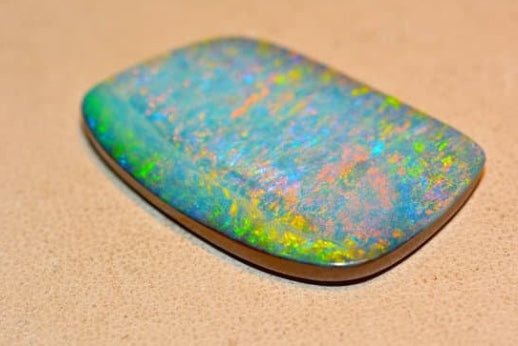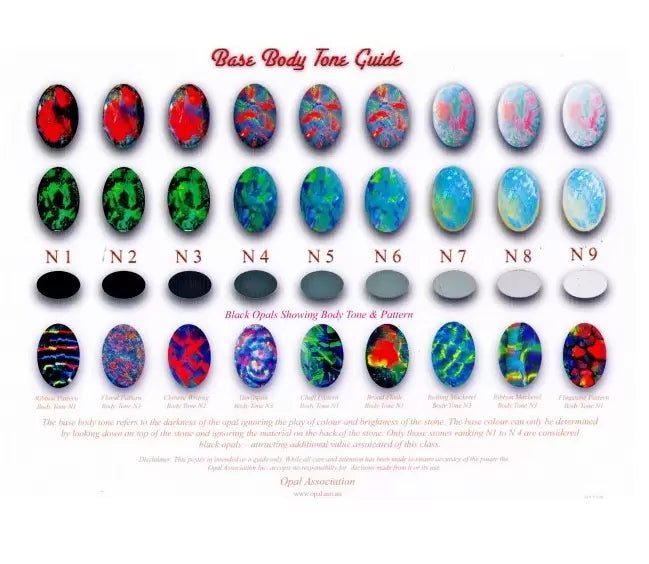
Understanding Opal Doublets and Triplets
Frequently Asked Questions:
- What is a Doublet Opal?
- What is a Triplet Opal?
- What is the difference between Doublets, Triplets, and Solid Opals?
- What happens when Doublets or Triplets get wet?
- Why do some opals go cloudy?
- How should I care for a Doublet or Triplet?
Introduction to Doublets and Triplets
Doublet and Triplet opals are partially fabricated gemstones that include a thin slice of light opal adhered to a darker backing, designed to mimic the appearance of a solid Black Opal. This darker backing enhances the opal's colours, making them appear more vibrant and intense. Doublet and Triplet opals are generally less expensive than solid opals as they contain only a small amount of genuine solid opal.
Doublet Opals
Doublet opals, or simply Doublets, consist of two layers bonded together with jeweller's adhesive:
- Light Opal Slice: This is a thin slice of light opal, typically thicker than the slice used in Triplet opals. The edges are often rounded off to give the stone a cabochon (domed) top.
- Dark Backing: The backing can be made from black industrial glass, black ‘potch’ (colourless opal), or more commonly, brown ironstone (the host rock of natural Boulder Opal).
Identification: You can identify a Doublet by viewing it from the side, where you should see a straight line separating the opal layer from the dark backing. If the Doublet is set in jewellery with the sides covered, it can be challenging to differentiate it from a solid Australian Opal, although a flat cabochon is a hint.
Triplet Opals
Triplet opals, or Triplets, consist of three layers:
- Light Opal Slice: A very thin slice (approximately 3mm) of light opal is used.
- Black Backing: Typically made from blackened industrial glass (Vitrolite) or older Triplets may use black ‘potch’.
- Clear Capping: The top layer is a clear glass, quartz, or resin cap in the shape of a medium cabochon, which protects the thin opal slice and can magnify its colours.
Identification: Triplets are identifiable by their clear, non-opal top layer, giving them a glassy appearance. Viewing from the side, you will see the three distinct layers. If the opal appears black and plastic-like from the back, it is likely a Triplet.
Caring for Doublets and Triplets
Due to their layered construction, Doublets and Triplets require careful handling to prevent water damage. Prolonged exposure to water can cause the adhesive to break down, leading to a cloudy appearance or even peeling of the layers.
- Water Exposure: While occasional contact with water (like a shower or rain) is generally safe, it's best to avoid prolonged immersion.
- Cleaning: Use a damp, soft cloth and mild detergent. Avoid soaking, harsh chemicals, and ultrasonic cleaners.
Note: Solid Australian Opals are non-porous and can safely be exposed to water without damage. Only Doublets and Triplets need to be kept dry to prevent moisture penetration.
Summary
Doublets and Triplets offer a beautiful and affordable alternative to solid Australian Opals, providing similar aesthetic appeal at a fraction of the cost. It's important to be informed about the type of opal you are purchasing and to follow the proper care instructions to maintain their beauty and longevity.
Iona Opal Australia offers solid Australian Opal only. We do not carry opal doublets, triplets or quintuplets.




Leave a comment
This site is protected by hCaptcha and the hCaptcha Privacy Policy and Terms of Service apply.